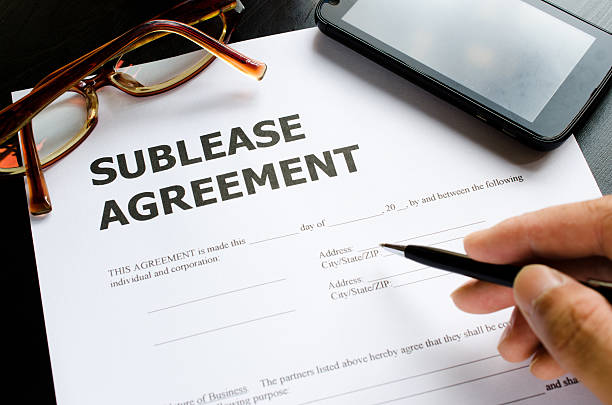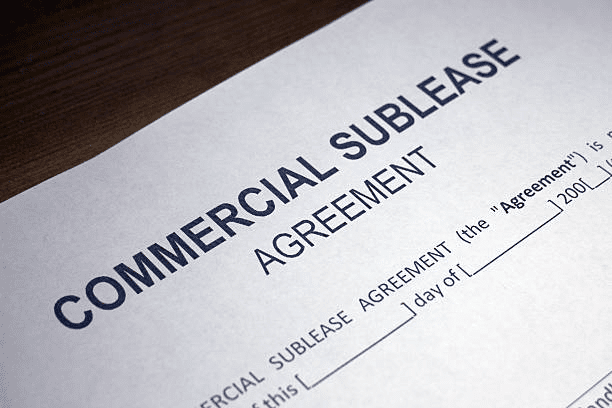Subleasing is the act of transferring a lease to another person with no further obligations as a tenant under the lease. A sublease agreement occurs when an existing tenant disposes of a portion of their possessory interest in the rental property.
Subleases should be distinguished from assignments, which involve a tenant disposing of the entire interest in the rental property. Subleasing can be an appealing option for:
1. Tenants – Tenants are relieved of potential financial pressure as sublessees provide rental income. Therefore, tenants reduce some or all of the burden to pay rent or outgoings.
2. Landlords or Property Owners- Tenants who sublease allow a landlord or property owner to secure an additional party to support rental income for specific assets.
3. Sublessess – Rent and fit-out costs and make-good obligations may be lower than in a direct lease. This is true, especially if the premises are occupied immediately before the sublease is granted and expires before the head lease expires.
A sublease has no effect on the rights of the tenant and the landlord. However, this results in a relationship being created between the landlord and the tenant, and the landlord and the subtenant (new tenant).
Simply, a sublease allows a tenant to maximise their cash flow by allowing a sub tenant to rent a portion of the premises. Read on to know more about subleasing.
Benefits of a Sublease Agreement
1. Increased flexibility: A sublease allows an original tenant to temporarily rent out their rental or commercial space. This gives them more flexibility in their living or business arrangements. An original tenant and a sub tenant may utilise shared services such as internet connections, reception services, and office equipment.
2. Extra income: Tenants can earn extra money if they sublease their rental space to someone else.
3. Better property management – This is simplified when a tenant agrees to sublease their rental space, as the subtenant is paying rent directly to the tenant.
4. Improved space utilisation – Tenants who need less space can sublease a portion of their rental space to another person. This allows them to make better use of their living or business space.
Important Considerations
It’s important to consider the following before people sublease a rental or commercial property:
1. Check the Sublease Clause
Just because the rental agreement does not mention a sublease clause does not mean people are allowed to take on a new tenant. A sublease contract usually contains the:
- The term for sublease and information about the subleased premises
- Landlord’s consent
- Renter’s insurance and a security deposit
- Specific clauses regarding rent arrears
- Repair, damage, and obligations to the head tenant
2. Take the Landlord’s Consent
Landlords cannot prohibit tenants from subleasing unless there is a reasonable cause. People may file a legal complaint to the NSW Civil and Administrative Tribunal (NCAT) if they believe the landlord unreasonably denies consent.
3. Financial Obligations
Indeed, a sublease clause can help tenants reduce the financial burden on their businesses. However, tenants cannot simply walk away from their financial obligations under the lease. In addition, landlords typically require that the tenant agree to be liable for all monies payable under the lease. As a result, it is critical to select a sublessee who has the financial means to carry out the sublease.
4. The Sublease’s Term
It’s important to address the subleasing term in order to avoid it being deemed an assignment. Simply, an assignment is the transfer of the entire lease interest, whereas, a sublease is the transfer of an interest less than the tenant’s interest.
So, when should the expiry date occur to avoid a lease assignment? The expiry date of the sublease must be at least one day before the expiry date of the lease.
The tenant will not have an automatic right to reclaim possession if the sublessee vacates the premises early. An assignment will also have an impact on the tenant’s ability to recover sublease rent from the sublessee.
Moreover, it may be a breach of covenants given in favour of the tenant’s bank particularly if the head lease has been used for security of loan facilities.

5. Make Good Obligations
Being a good tenant can be a costly exercise at the end of a lease or sublease. Why? There may be costs associated with preparing the rental unit for return such as cleaning or repairing damages. This may also lead to further negotiations if the sublease nearly expires.
Moreover, the head lease will have its own framework and will set reasonable requirements. Tenants should consider whether they intend to pass on any or all of the make-good obligations to the sublessee under the sublease.
6. Service Interruptions/COVID-19 Considerations for Subleasing
COVID-19-related lockdowns disrupted a lot of businesses. Hence, tenants should consider appropriate provisions in the sublease that anticipate and address:
- Service interruptions
- Forced business closures
- Other issues like relief measures
These provisions must be carefully drafted. You should also take into account any other obligations. These obligations are imposed on the original lessee under the head lease agreement. This ensures that trade is maintained which is a common requirement in many retail leases.
When Can a Tenant Sublease a Rental Property?
Consent to a sublease is deemed unreasonable under local laws when the:
- Reason for withholding consent has nothing to do with the relationship between the landlord and tenant regarding the lease
- Tenant is respectable and is responsible enough
- Landlord’s reason for withholding consent relates to the effect of an assignment action on potential investors.
Withholding consent as reasonable when the:
- Reason for withholding consent is what a reasonable landlord would do in the same situation
- Person to whom the interest is to be assigned may use the original lease to harm or injure property adjacent to the landlord’s property
- Landlord has grave doubts about the assignee’s ability to remain liable to pay rent
Granting a sublease may entitle the landlord to terminate the head lease in situations where the:
- Head lease prohibits the grant; or
- Landlord refuses to give consent
In such cases, subleasing will also automatically terminate and potentially expose the tenant to a sublessee’s claim. This is because the tenant promised to provide the sublessee with exclusive possession for a specific term and is now unable to do so. As a result, when granting a sublease, it is critical that the head lease process be followed.

Importance of Seeking Legal Advice
It’s always important to seek legal advice regarding property law matters due to its complex nature. We at JB Solicitors are knowledgeable in property management and can help people who want to make legal subleasing agreements.
Our property lawyers can also help with drafting property contracts that adhere to state law and regulations. You should also be aware of how to exercise due diligence when you sublet to a new subtenant. For more information on renting, tenancy and subletting, do not hesitate to contact our team.
Contact us today for more information about subleasing matters in Australia.
